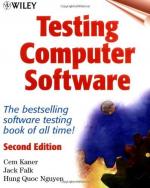|
This section contains 1,261 words (approx. 5 pages at 300 words per page) |

|
Educational computer software inherited from television the hope for revolutionizing educational practice. In addition to the audiovisual qualities found in educational television, computers offered learners interactivity, immediacy of feedback about responses, and control over learning experiences. Academic subjects such as mathematics, science, history, and reading could be taught to children in an efficient manner. Nonetheless, not all computer applications are alike in the educational opportunities that they afford children.
Basic Applications
In his book Mindstorms: Children, Computers, and Powerful Ideas, Seymour Papert (1980) advanced the idea that computers can teach children by serving as a tutor, a tool, or a tutee. As a tutor, the computer became an extension of teaching machines in which children learn by drill and practice. The computer tutors the child until the child masters that content. Lessons can be tailored to the knowledge bases of individual learners, and interactive contingent...
|
This section contains 1,261 words (approx. 5 pages at 300 words per page) |

|


